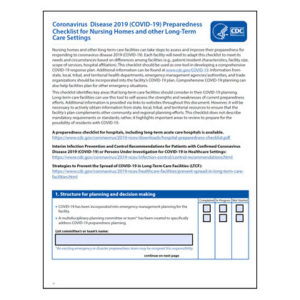My Hospice Notebook
I wish we heard more about hospice and palliative care. You know, the end-of-life stage, the “last stop on the care-train”—and all those other euphemisms we tend to use because we don’t quite know enough to phrase it right. Hospices are as much a part of long-term care as skilled nursing or rehab, yet we talk about them so little.
Lately, it seems the only hospice news that’s on the newswires is the kind we don’t like to hear about—Suspicions of shady intake/discharge practices, a surging number of federal audits on hospices for tweaked billing practices, allegations of misused narcotics.
Scandals always seem to get the most web clicks, but I know there are better stories out there to tell.
In a way, a hospice caregiver is unique among all other types of caregivers—How can a nurse, a “nurturer to health” almost by definition, help someone to accept death? You see what I mean; and how even other caregivers can fall into an awkward unknowing on that. But our hospice caregivers out there do it every day, so perhaps you don’t realize how unique you are.
I, for one, would much rather learn more about what hospices are doing RIGHT—because I think it’s a rather under-sung part of long-term care. In our media sector, we talk so often these days about care coordination and how important it is to include every care-component in the process of delivering our services—and yet we seem to cover so little of the last stage of long-term care.
Every once in a while, I hear about a hospice that has created a really unique way to interact with its local community. Every once in a while, someone has a fundraiser idea that is so fun and interesting that it really shines—and works. Every once in a while, a hospice comes up with a really cool idea on how to smooth out the transitions of care and forge new relationships with hospitals and local skilled nursing facilities.
So, gentle readers, here is my proposal: Once a month, I’d like to highlight a hospice facility that has a truly interesting story to tell—something inpiring and unique, something that’s worthy of standing as an example for others in the hospice care sector to try.
I’ll call it my “Hospice Notebook.”
Tell me about your organization’s thought-leaders, your caregivers and your volunteers. And about how you’ve managed to do a lot with little. About how we can all do it even better, if we try some new ideas. Don’t be shy: Multi-state organizations might learn something valuable from the small stand-alones, and high-tech places could learn from low-tech places. Keep in mind that, in the end, you’re not really speaking to me—you’re speaking to your caregiver peers.
This is not a contest, and there is no award. It’s just me asking you to teach all of us more about your organization’s approach to hospice care, and why others can learn something valuable from them.
As a side note: This is not the place for you to announce mere facility openings, new hires, etc. This is meant to be about idea-sharing—for initiatives and ideas that others can take home to their own hospice facilities. You know what I mean; so please don’t flood my inbox with emails about your new VP or your Tuesday fundraiser, unless it’s something so unique that your peers should try it, too.
If you have a hospice or palliative care project or initiative you’d like to share, simply email me at ptabar@iadvanceseniorcare.com. Since I receive a lot of daily emails, please use the subject header of “hospice notebook” so I can find your stories right away.
We can’t wait to learn more from you.

Pamela Tabar was editor-in-chief of I Advance Senior Care from 2013-2018. She has worked as a writer and editor for healthcare business media since 1998, including as News Editor of Healthcare Informatics. She has a master’s degree in journalism from Kent State University and a master’s degree in English from the University of York, England.
Related Articles
Topics: Executive Leadership , Finance , Leadership , Risk Management , Staffing











